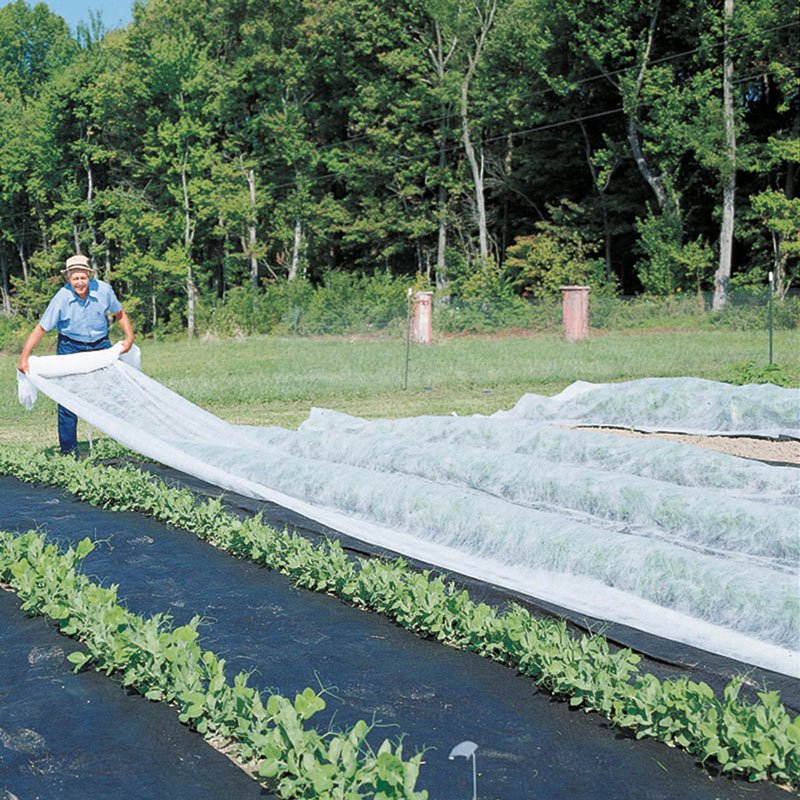
What Are Floating Row Covers?
Floating row covers are lightweight, translucent fabrics that you drape over your plants. Think of them as protective umbrellas that let the good stuff in—light, moisture, and air—while blocking out the bad stuff, like those pesky hornworms. Made from materials like spun-bonded polypropylene, these covers are versatile and effective, adding a layer of protection without smothering your plants.
Using floating row covers is a breeze. You simply set them over your crops, anchoring the edges to the ground. This way, they stay snug and secure, even during windy days. The best part? They can be used for various plants like tomatoes, peppers, and even leafy greens. So, whether you’re an experienced gardener or just starting out, floating row covers can be a game changer in your fight against pests.
Benefits of Using Floating Row Covers
There are plenty of reasons to consider using floating row covers in your garden. Let me break it down for you:
- Pest Protection: They’re your first line of defense against hornworms and other pests. By covering your plants, you create a barrier that makes it hard for these nuisances to reach them.
- Temperature Regulation: Floating row covers can provide a mini-greenhouse effect. They help to retain heat, which is especially beneficial in the early spring or late fall when temperatures can dip.
- Moisture Retention: These covers can help keep moisture in the soil, reducing the frequency of watering. This is especially useful during dry spells.
- Sun Protection: They can also shield delicate plants from harsh sunlight, preventing sunscald during hot spells.
Imagine coming out to your garden and finding your plants thriving while others are riddled with pests. That’s the beauty of using floating row covers!
How to Use Floating Row Covers
Using floating row covers is simple, but there are a few key steps to ensure maximum effectiveness. Here’s how to get started:
1. **Choose the Right Material:** Look for lightweight fabric that allows sunlight and moisture to penetrate while keeping pests out. Brands like Agribon offer options that are perfect for this purpose.
2. **Prepare Your Garden:** Before laying down the covers, make sure your plants are healthy and free from existing pests or diseases. If you’ve spotted hornworms in your garden, they need to be removed before covering.
3. **Install the Covers:** Drape the covers over your plants. Make sure they are wide enough to allow for some growth. Secure the edges with soil, rocks, or specific anchor pegs to prevent them from blowing away.
4. **Monitor for Growth:** Check your plants regularly under the covers. As they grow, you may need to lift the covers to provide enough space.
By following these steps, you can create a safe and nurturing environment for your plants, free from the prying jaws of hungry hornworms.
Common Mistakes When Using Floating Row Covers
Even though floating row covers are pretty straightforward, some gardeners make a few common mistakes. Here’s what to watch out for:
- Not Securing Properly: If the covers aren’t anchored well, they can blow away in the wind. Ensure the edges are well secured to avoid any mishaps.
- Overheating Plants: On particularly hot days, floating row covers can trap heat. If temperatures soar, it’s wise to lift the covers to prevent overheating.
- Neglecting to Monitor: Regularly check under the covers. It’s easy to forget they’re there, but your plants will still need attention and inspection for pests.
Being aware of these pitfalls can save you time and effort, letting you focus on what’s really important: enjoying your thriving garden.
Alternatives to Floating Row Covers
While floating row covers are fantastic, they aren’t the only option out there. Here are a few alternatives to consider:
1. **Insect Netting:** This is a finer mesh that can provide extra protection against smaller pests. It allows for more airflow while blocking out insects like aphids and hornworms.
2. **Companion Planting:** Some plants repel hornworms naturally. For example, planting **basil** or **marigolds** alongside your tomatoes can help deter pests without needing covers.
3. **Traps and Barriers:** Using sticky traps or placing barriers around your garden can also reduce hornworm access. This approach may not be as effective as floating row covers but can help in conjunction with other methods.
Experimenting with these alternatives can lead to a more diverse and resilient garden.
Maintaining Your Floating Row Covers
Once you’ve got your floating row covers in place, maintaining them is important for long-term success. Here’s how to keep your covers in top shape:
– **Inspect Regularly:** Check your covers for tears or wear, especially after storms or high winds.
– **Clean as Needed:** If dirt or debris collects on the covers, give them a gentle rinse to keep sunlight penetration optimized.
– **Store Seasonally:** When not in use, clean and store your covers to preserve their lifespan.
Just like any good tool, a little care goes a long way in ensuring your floating row covers continue protecting your plants season after season.
Incorporating floating row covers into your gardening routine is an effective and eco-friendly way to fend off hornworms and other pests. They serve as a barrier, while also promoting healthy growth by regulating temperature and moisture. Whether you’re a beginner or a seasoned gardener, these covers can make a noticeable difference in the health and productivity of your plants.
So, the next time you tend to your garden, think about giving your plants that cozy little blanket of protection. It’s a small effort for a big reward. Happy gardening!

